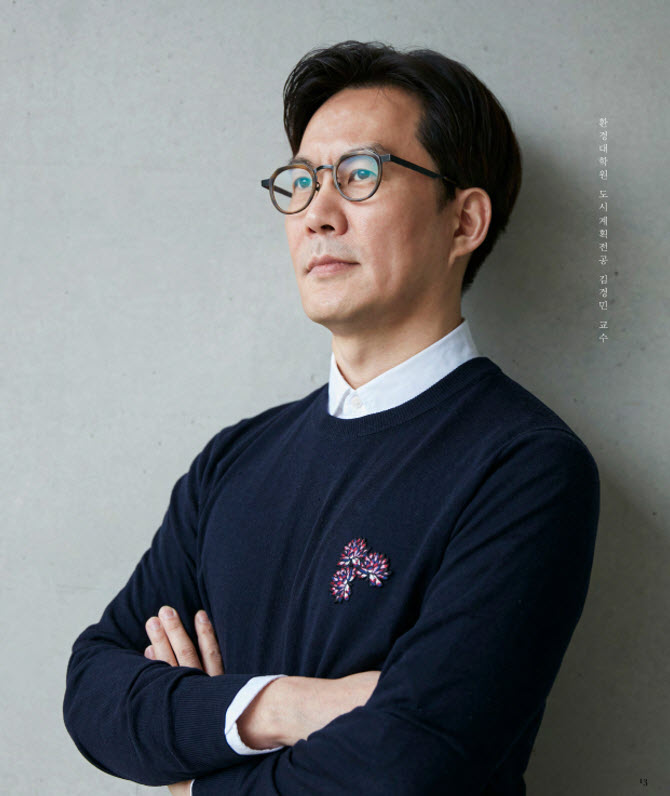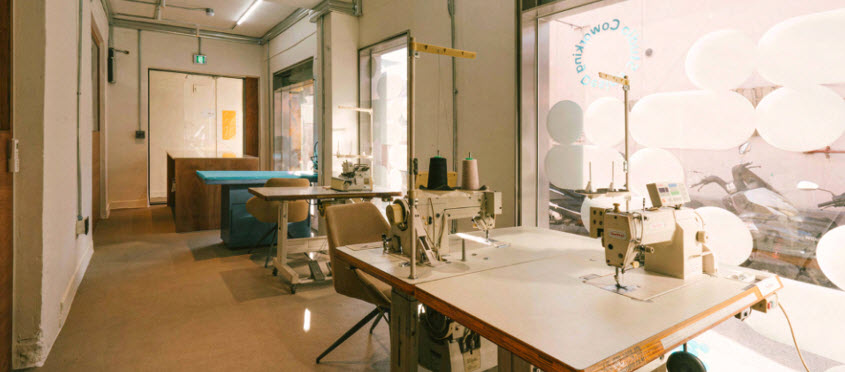
Professor Kyung-min Kim, Graduate School of Environmental Studies, Major of Urban Planning
Professor Kyung-min Kim, who received the Ph. D degree in urban planning and real estate studies in Harvard University, early noticed the roles of social enterprises in cities and the potentials of shared spaces. Working actively in various areas, including research, teaching, broadcasting and writing, he is dreaming about digital social innovation by which the real estate information, having the highest asymmetry, is equally shared with all. We asked Professor Kim how real estates, social enterprise and urban development are connected with each other.
1. Professor Kim, you established in 2012 Urban Hybrid, the social enterprise where you currently work as an advisor, and conducted the community development in Changshin-dong and Shinrim-dong. Could you tell us why you started the project at that time when the community functions in spaces were not evaluated highly?
In 2010, fast fashion brands, such as UNIQLO and ZARA, were popular in Korea, because they allowed people to enjoy the trends easily and quickly at a low price. There was a kind of ‘source’ of fast fashion in Korea, which is the Dongdaemun Shopping Center. The Dongdaemun Shopping Center was locally divided into the sections for design, manufacturing and sale. Changshin-dong, which served as a background manufacturing base of the Dongdaemun Fashion Town, needed spaces so that the young designers and sewing workers could work in a good environment. Thinking that the communication between creative designers and competent manufacturers would give powerful synergic effects in the space, I made the Changshin Azit. Maintained still, the Changshin Azit is producing positive synergic effects among the occupants who are mostly fashion workers.

Changshin Azit shared by young designers and sewing workers to produce synergic effects (Image source Share One).
2. You planned the first newly built shared house in Gangnam, reflecting the young lifestyle of single-person household. Where did you discover the potentials of sharing economy, which is now popular?
Many people think that human network or communities are actively created in the shared spaces, but that’s an ideal story in the individualized modern society. I was sure that the shared spaces would be popular for very realistic and economic reasons. Let me illustrate this way. We can make 4 studios of 30 m2 in a building of about 120 m2 located in Yeoksam-dong. If we assume that the monthly rent per studio is 800,000 KRW, the lessor can obtain 3.2 million KRW as a profit. Generally, a shared house is designed to have one third of shared space and two third of personal spaces. When a shared house is built in the area of 120 m2, 8 rooms of about 10 m2 can be made, and the personal spaces will be about 80 m2 and the shared spaces, such as the kitchen and dining room, will be about 40 m2. As a result, a person can use a space about 40 m2 wider than the conventional 10 m2-studio. As the personal space is reduced, the rent is decreased. From the lessor’s point of view, even if the rent is reduced to 600,000 KRW, the profit is increased to 4.8 million KRW because the number of rooms will be increased. So, the share house is a residence model that can benefit both the suppliers and the consumers.
3. May people expect that the shared spaces will decline due to the COVID-19 pandemic. Some people think that the urban functions will decreased because of the development of non-contact technologies. What’s your view on this matter?
In 19th century, the cholera pandemic strokes the entire world. People wanted to move to the suburb, but only the rich bourgeois were able to avoid the contact with others, and most of the people who had a job in the urban areas had to remain in the cities. When the telecommunication revolution occurred in 1930s with the introduction of radio and telegraph and when the IT revolution occurred in the late 1990s with the emergence of the internet, people expected that the enterprise clusters in the central cities would be disassembled, but that did not happen. Rather, the major buildings in the office areas continuously grew up. The current pandemic situation is slightly difference, but the functions of cities will not decrease as long as there are profits of agglomeration economy, like the financial companies in Yeouido and the IT companies in Gangnam, Pangyo and Gasan Digital Complex. As we continue to live urban areas, shared space is a necessary residence model.

A shared house, in which individuals can utilize larger spaces even in a building of the same size, is a residence model that is beneficial to both the suppliers and consumers (Image source Share One).
4. I heard that social enterprises positively participate in urban development. Why is the role of social enterprises so important in urban development?
The biggest purpose of developing a certain area is to improve the housing welfare of the residents and revitalize the local economy. Social enterprises, which are profit-making civilian organizations that have clearly defined responsibilities, are considered as the players that can reflect and practice the demand of the local communities most efficiently. In the US, large-scale public rental apartments were constructed until 1970s, but that turned the urban areas into slums, like the ‘broken windows theory.’ The nonprofit civilian developers (real-estate developers) emerged from that time. One of them is the CDC (Community Development Corporation), which is the beginning of social enterprises. Since early 2010s, CDC-type development companies have built civilian rental houses in the US.
5. Working actively in various areas, including research, teaching, broadcasting and writing, what is the most memorable moment to you?
During the New Town development in early 2010s, one of the important issues was the redevelopment of Ikseon-dong, Jongro-gu, where there are many Hanok houses built in 1920s and 1930s. The plan was to entirely demolish the currently oldest Hanok complex and construct a composite high-rise apartment complex. The elderly people who had lived there for decades were about to lose their homes. Opposing the plan, I appeared to broadcasting shows and wrote columns. The elderly people noticed me and expressed their appreciation. I felt rewarded by that, and decided to make continuous efforts to study to accomplish urban development with social balance. The second is my study about Segwon Jeong, who is considered as the first development of Joseon. In 1920s, he established Geonyangsa, Korea’s first modern real-estate development company, and developed the Hanok complex in Bukchon to keep the residential areas of Joseon people. Since he was forgotten after the liberation of Korea and has not been evaluated properly, it was really rewarding for me to track his life course, collect relevant data, and publish a book,
6. Could you tell us about your future plans and visions?
The first thing I would like to do is to enrich the curriculum of the Social Innovation Major, a new major in the SNU Graduate School of Environmental Studies, to foster good human resources. Social innovation refers to the activities to establish a resilient, safe and inclusive urban community by addressing various issues related to local communities. I have served for 5 years as the Social Innovation Commissioner of the Ministry of Public Administration and Security. Because the field is growing continuously, Korea has a small pool of experts in high education. As the Institute of Urban Social Innovation Research was established through the MOU with SK, the Social Innovation Major was opened at the Graduate School of Environmental Studies. I would like to provide abundant educational contents to the students to support them to work as social enterprise managers who are able to give positive impacts on the communities. The second is to continue the digital social innovation that is conducted by the Shared City Lab. The asymmetry of information is highest in real-estate among all types of assets. The Shared City Lab created a price index to help the general citizens to easily access to the real-estate data and complement the problems of the conventional indexes. We will open it to the public in May or June. I will continue my study on urban development that can accomplish social balance.

